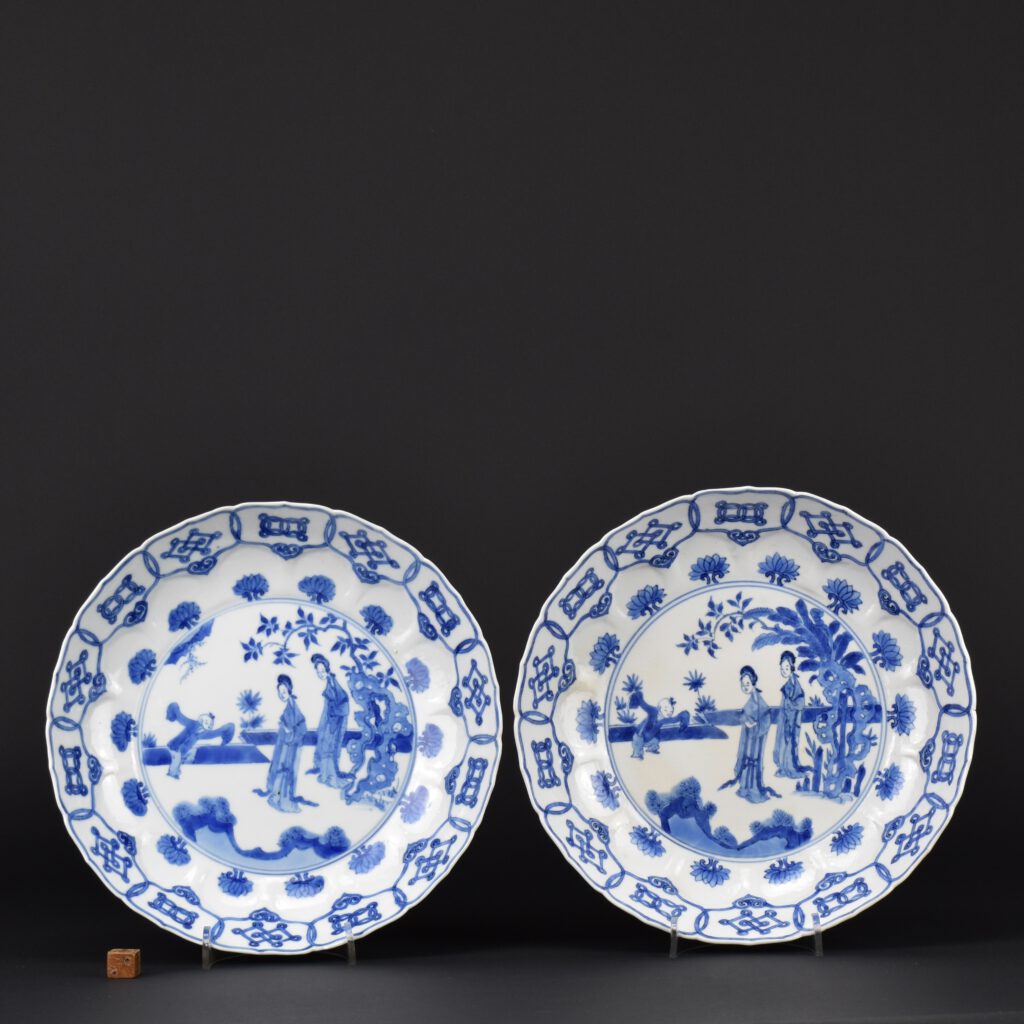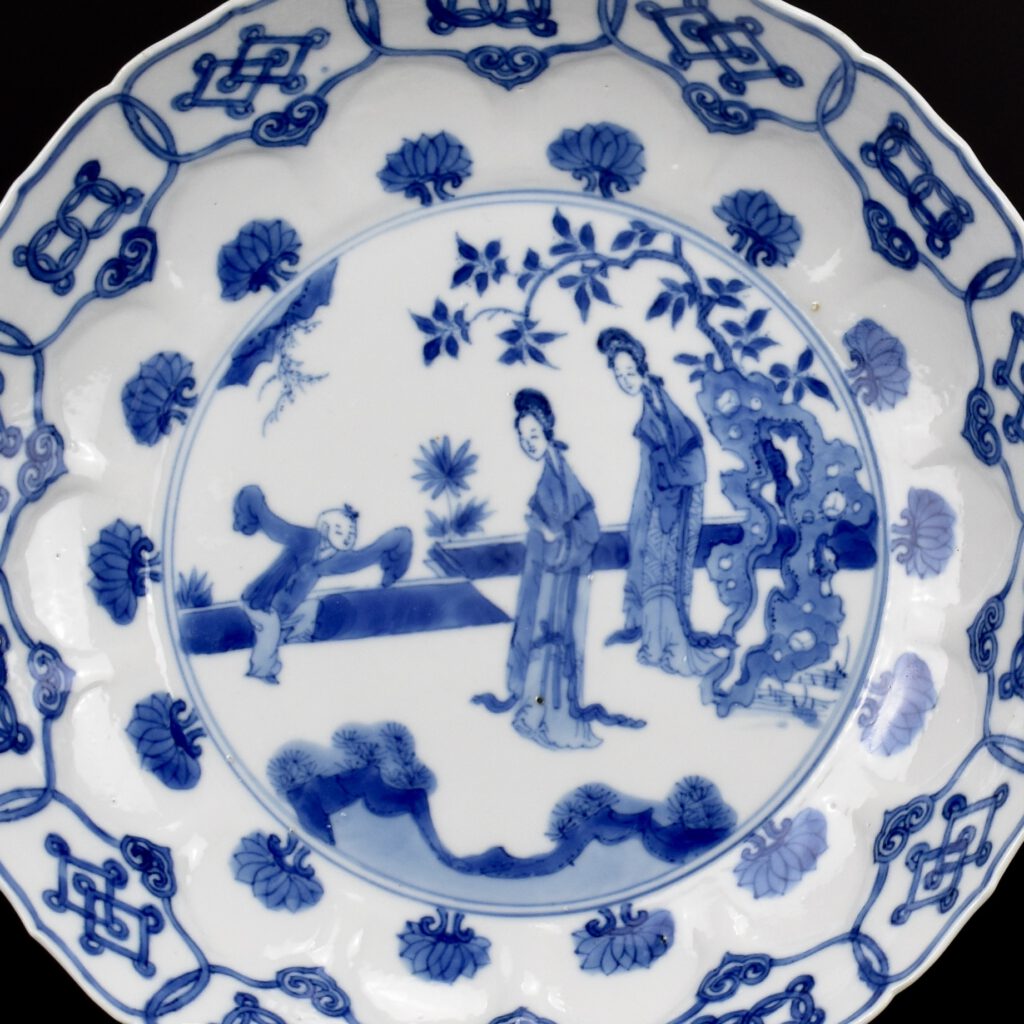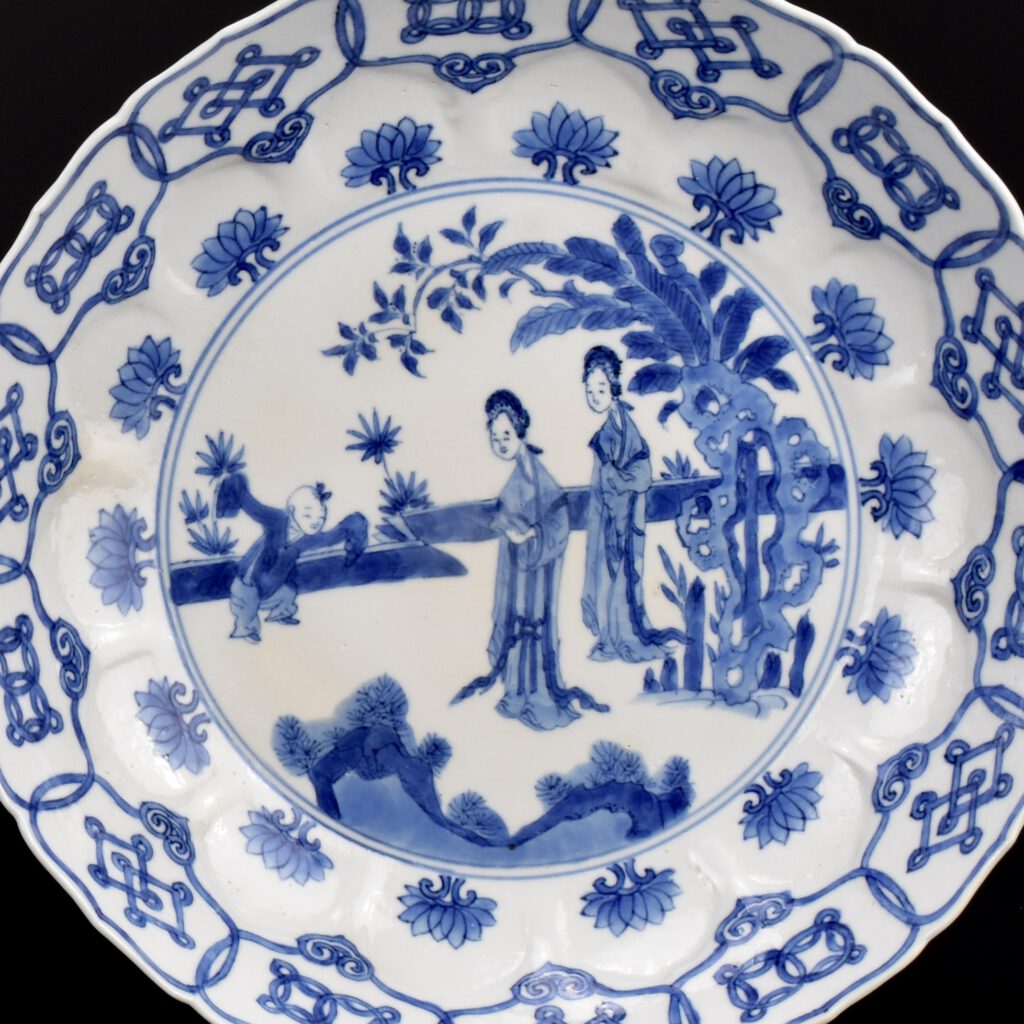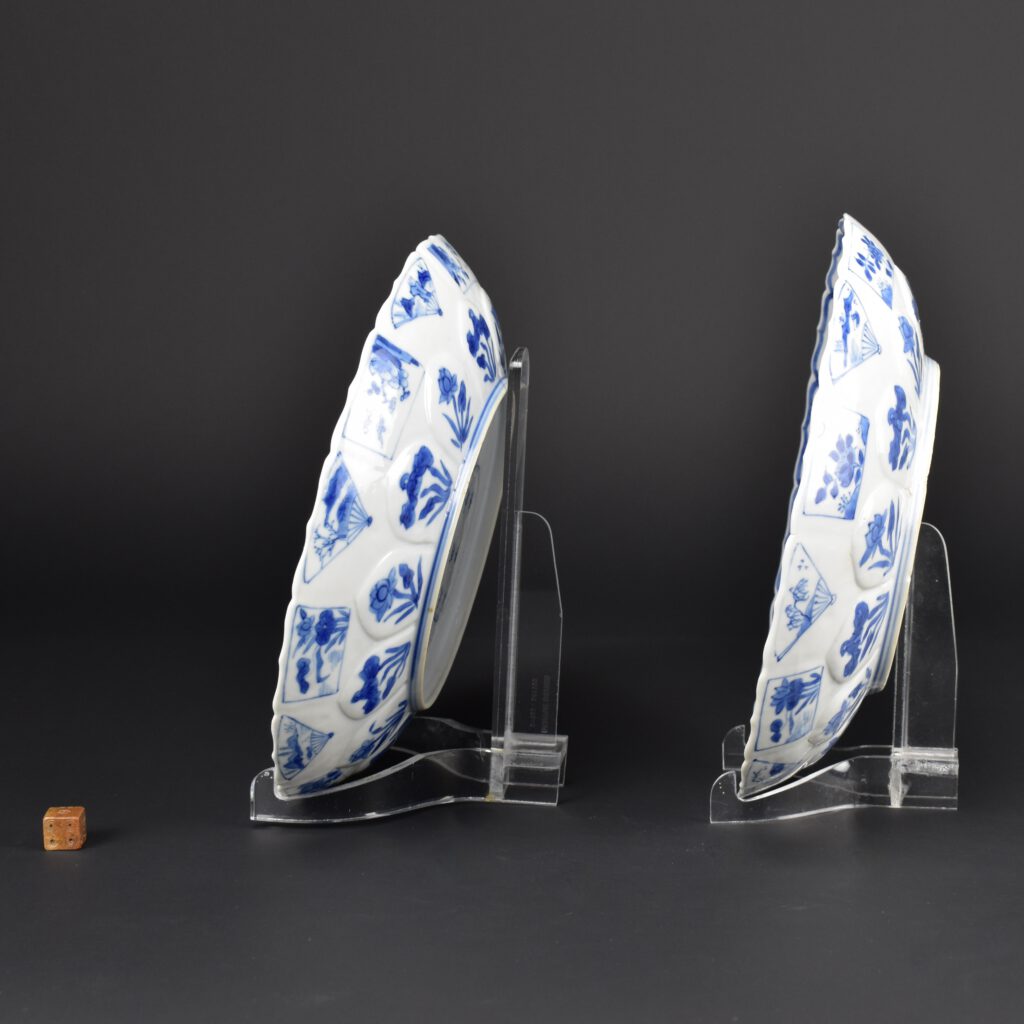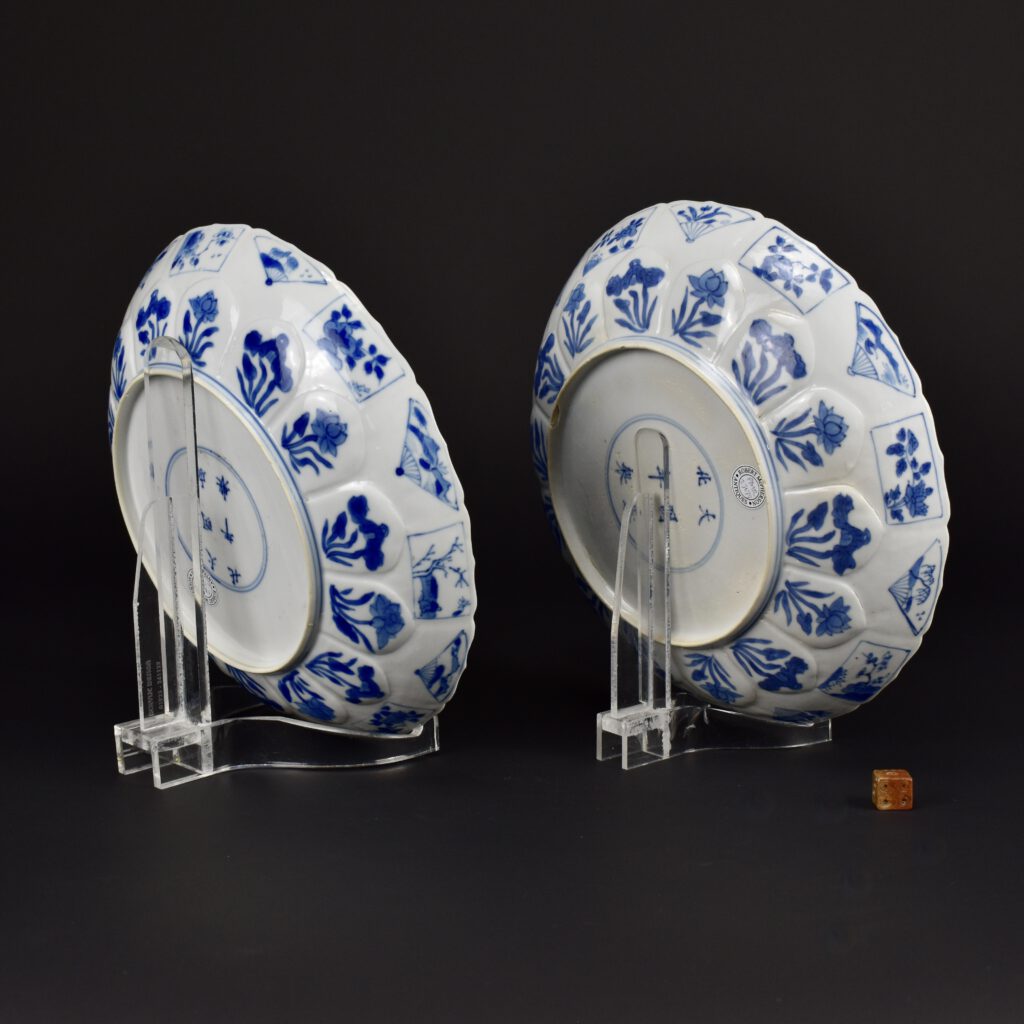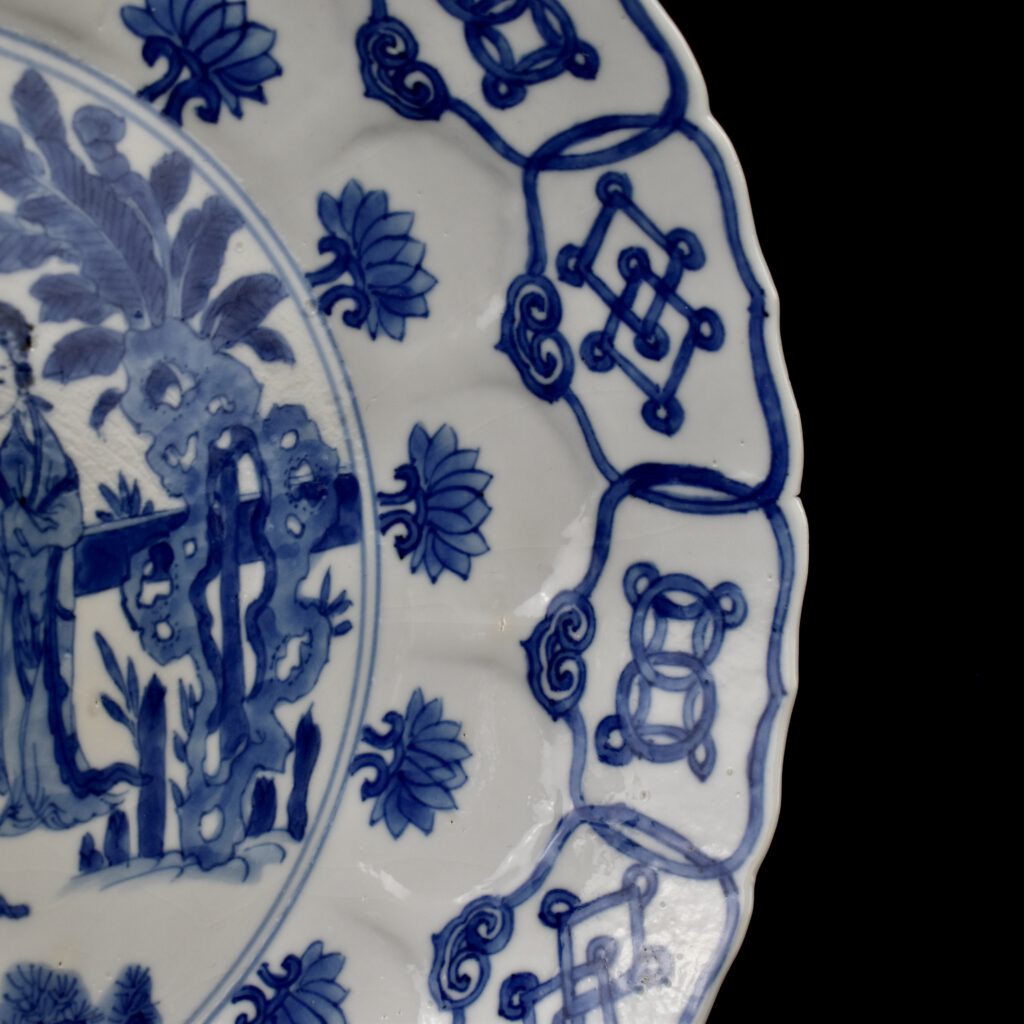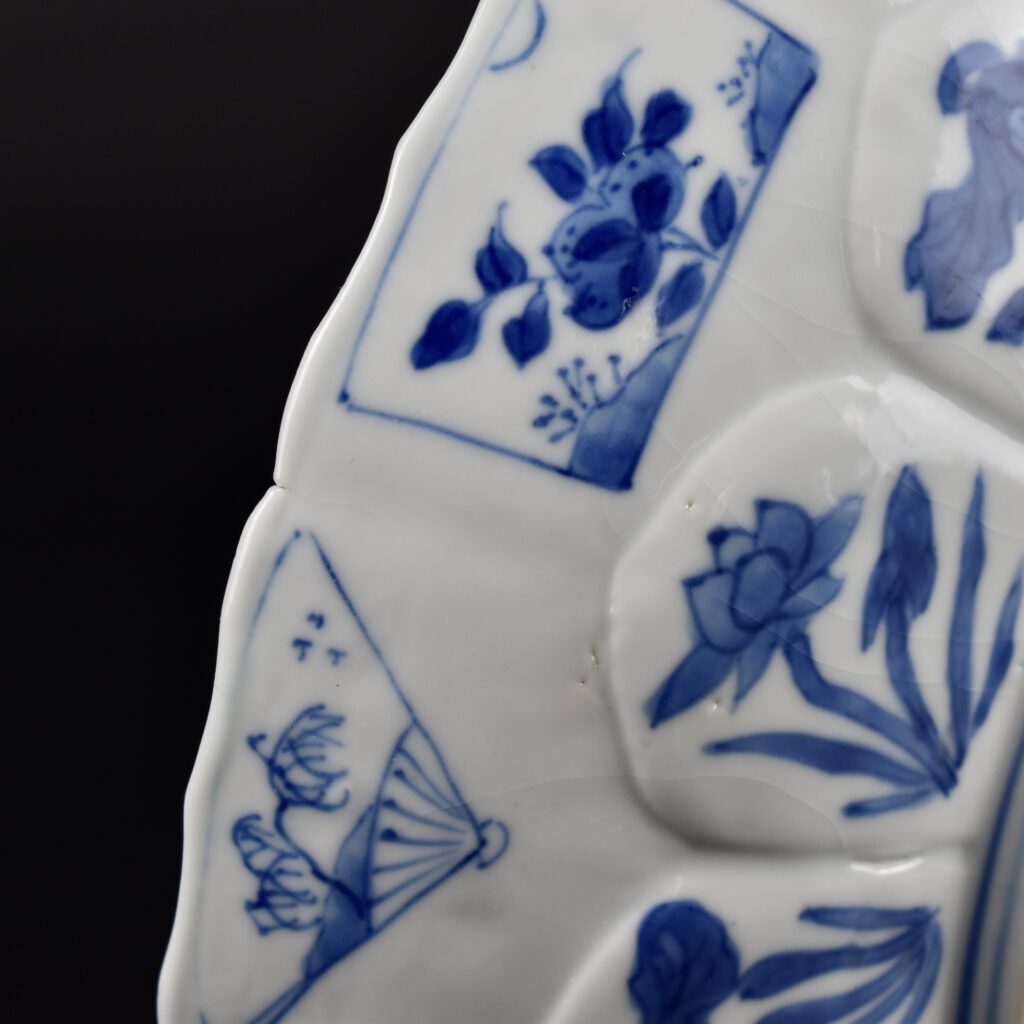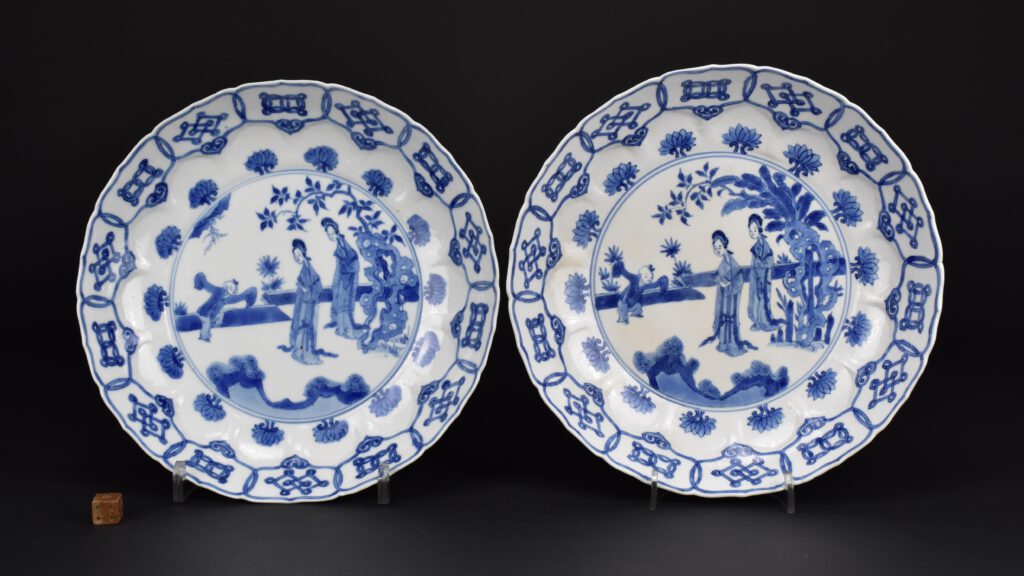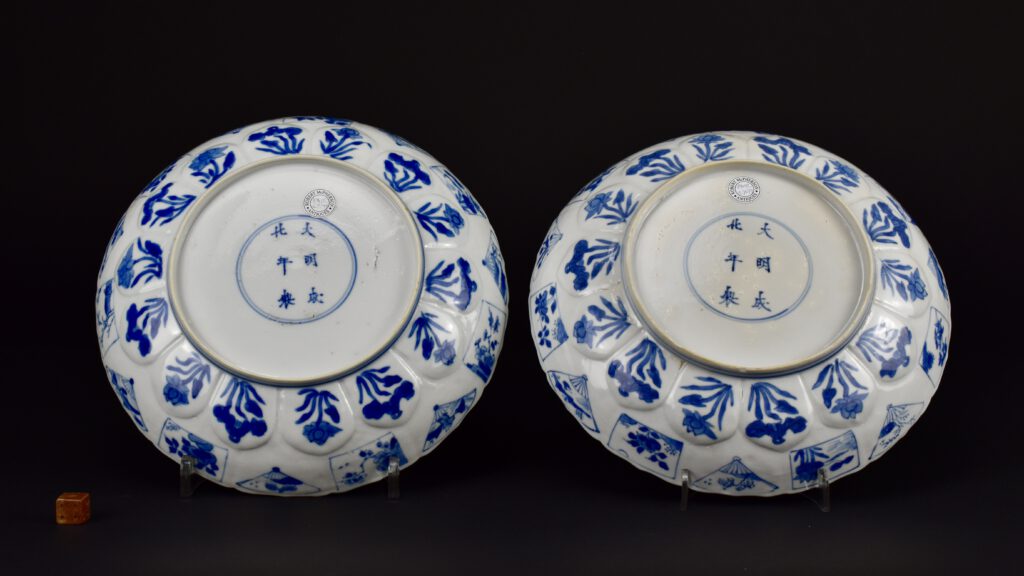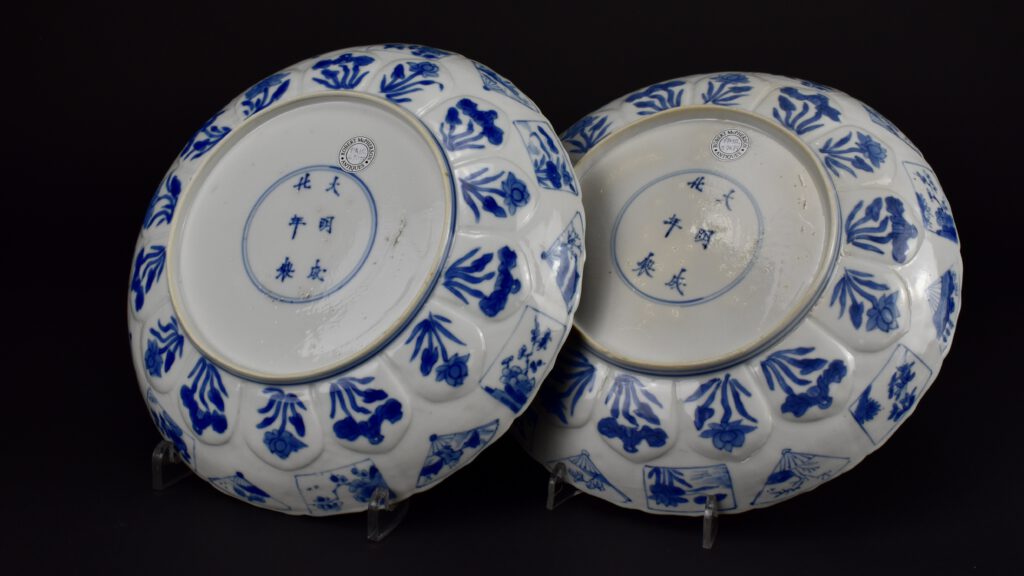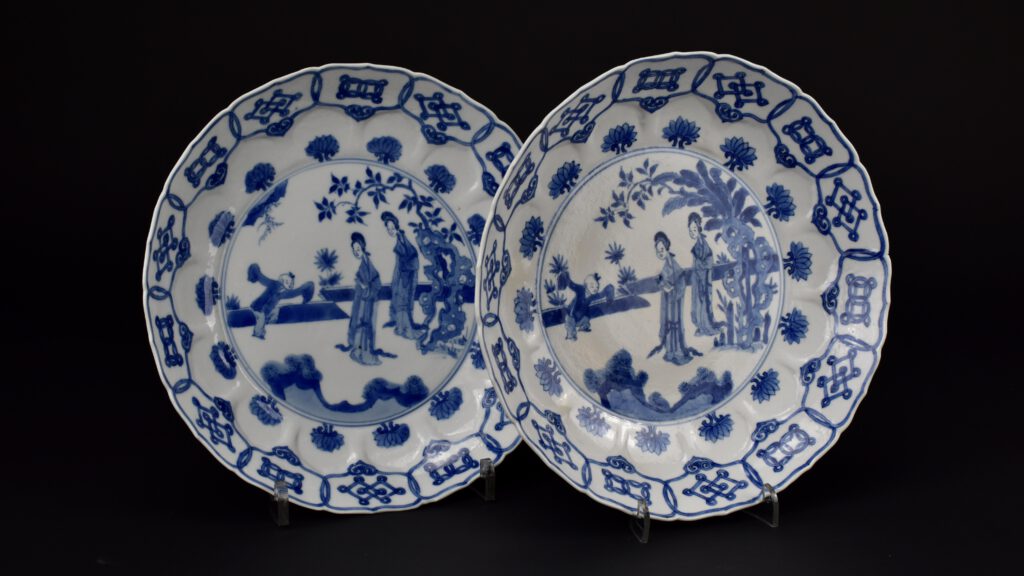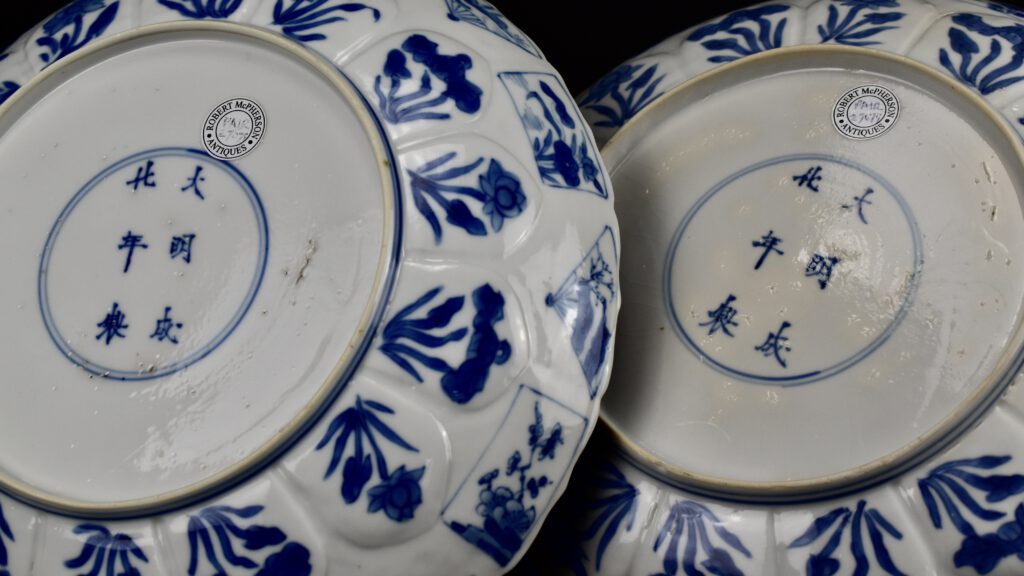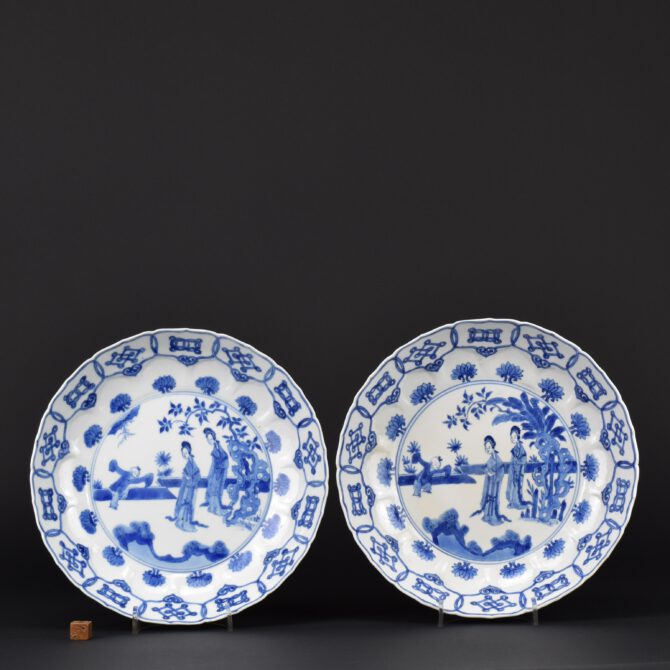
A Pair of Finely Painted Kangxi Blue and White Dishes
A Pair of Unusual Kangxi Blue and White Porcelain Saucer Shaped Dishes c.1690-1710. These thinly potted dishes have barbed rim as well as a moulded lotus band surrounding the well. The central design in the well of these dishes is of Ladies, in a balustraded garden with a dancing boy. To the right is a Gongshi, also known as a scholar’s rock or viewing stone, these are naturally occurring rocks that have long been appreciated by scholars in gardens or as small version on a scholar’s table. Behind the rock is a banana plant and a tree. The edge of central design is painted with stylised lotus flowers, set in lotus well of the petal moulding. The border is of cartouches with ruyi-head pendants, the centers with double precious objects repeated, two lozenges and two cash emblems, all tied with ribbons. These dishes were especially popular in the Netherlands where the thin elegant ladies were referred to as Lange Lyzen or`Long Eliza` in English. The backs are painted with lotus within lotus relief moulding, above that is a row of paintings, in rectangular frames and within fans. The bases with apocryphal Chenghua (1465-1487) Ming marks (for more details see below the Photograph Gallery). The tones of blue employed, as well as the white pearly glaze, are very similar to the well known `Rotterdam Riot` plates which can be dated to c.1692-1695. Unlike the political subject of the Rotterdam Riot plates, figures in gardens as a subject matter was not ephemeral. Therefore, it is likely the figure decorated plates were made over a longer period, this is further confirmed by the large extant number known.
See below for more photographs and references.
- Condition
- One dish in excellent condition, two minute frits to the rim c.1 mm or less. The other dish has broad crazing, there is one small crack from a firing fault.
- Size
- Diameter c.21 cm (8 1/3 inches).
- Provenance
- N/A
- Stock number
- 27079
- £ GBP
- € EUR
- $ USD
Information
Reign Marks on Kangxi Blue and White Porcelain :
Kangxi blue and white export porcelain object are sometimes found with the six character mark of the emperor Kangxi (1662-1722) to the base. These none-imperial reign marks are referred to as minyao in Chinese, denoting them as `popular wares` not destined for court use. However the majority of the marked pieces bare the mark of earlier Ming dynasty emperors, some are Jiajing (1522-1566), occasionally Wanli (1573-1620) but by far the most commonly encountered marks are those of Chenghua (1465-1487). David Howard in `The Choice of the Private Trader` (David S. Howard, Zwemmer, 1994) notes that "The Chenghua mark .... was not intended as a forgery, but rather as a compliment to the quality of the piece and to replace the mark of Kangxi who had forbidden the use of his name on porcelain made for export after 1682; a ban which nominally remained in force until the late 19th century". It appears this ban was not enforced, or if it was only partly enforced, as we have had many Kangxi export pieces made after this date (1682) that bare the six character Kangxi mark. It is worth noting that many 19th century copies of Kangxi blue and white porcelain bare a four character Kangxi mark, something you do not on the original, all Kangxi marks on porcelain of the period were of six character form.
